Inside The New York Botanical Garden
Posted in Gardens and Collections, People on February 19 2009, by Plant Talk
 Carol Capobianco is Editorial Content Manager at The New York Botanical Garden.
Carol Capobianco is Editorial Content Manager at The New York Botanical Garden.
I bumped into Peter Kukielski, Curator of the Peggy Rockefeller Rose Garden, the other day in the hallway—we don’t often see Peter indoors. It was one of the coldest days of the year and Peter’s cheeks were rosy—but so was his outlook for a new rendition of the Rose Garden.
 Peter has been working on a multi-year dream to transform his charge into the world’s largest chemically-free, low-maintenance rose garden. A tall order, for sure, since roses have a reputation of being among the most chemically-dependent flowers in existence.
Peter has been working on a multi-year dream to transform his charge into the world’s largest chemically-free, low-maintenance rose garden. A tall order, for sure, since roses have a reputation of being among the most chemically-dependent flowers in existence.
But during these months when our Rose Garden is in its winter stupor, Peter has been scouring the world (virtually, not physically) for the finest disease-resistant varieties in a major step to the conversion. Not only did he find what he was looking for, but all the growers donated the plants. Beginning in March, Peter will oversee the planting of 880 new, hardy roses to replace the more than 1,100 high-maintenance roses removed last fall, about one-third of the Rose Garden’s inventory. The new varieties bloom all season long and are easy to care for.
Peter’s passion for the project, his extensive expertise, and his willingness to experiment add up to an interesting season to come for the Rose Garden. Stay tuned for the announcement of its reopening this spring and be sure to come and visit.
Posted in The Orchid Show on February 18 2009, by Plant Talk
The Orchid Show Is Coming!

Get your tickets today!
Posted in Gardening Tips on February 17 2009, by Sonia Uyterhoeven
The Cutting Edge
 Sonia Uyterhoeven is Gardener for Public Education at The New York Botanical Garden.
Sonia Uyterhoeven is Gardener for Public Education at The New York Botanical Garden.
It’s the time of the year to get outside and evaluate the pruning needs in your yard. February and March tend to be ideal times to prune, not all but many of your shrubs.
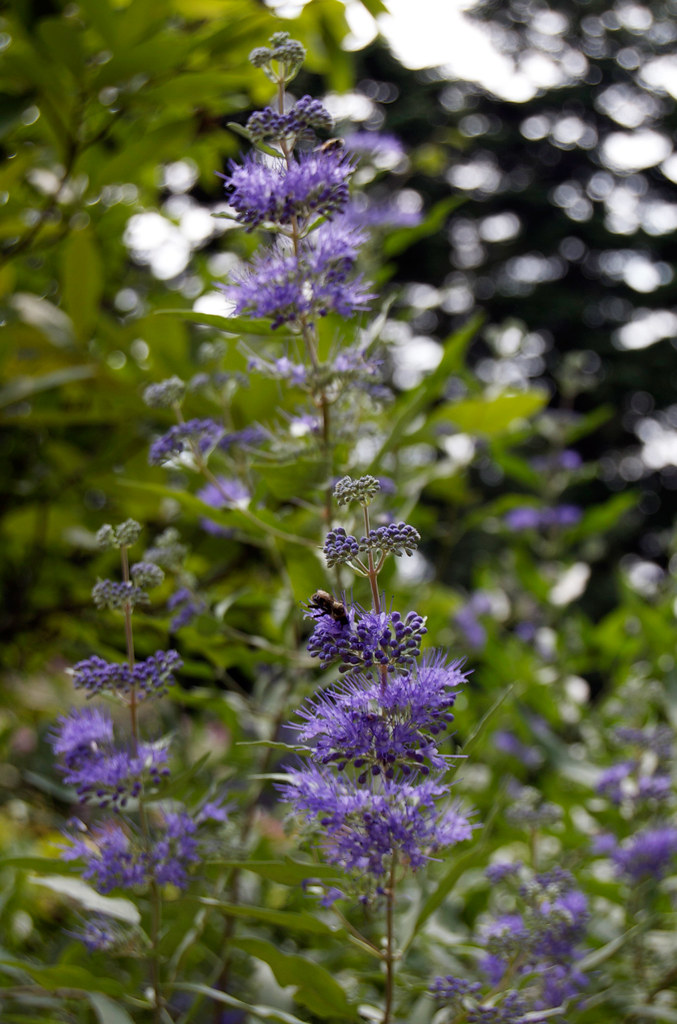 How do you go about deciding what needs to be done? First of all, it is important that you get to know your plants. Some shrubs respond well when pruned back hard every year in winter to early spring. They produce vigorous new growth and more flowers. Classic examples are repeat-flowering roses (e.g. hybrid teas), butterfly bush (Buddleja), and blue mist shrub (Caryopteris), pictured at right.
How do you go about deciding what needs to be done? First of all, it is important that you get to know your plants. Some shrubs respond well when pruned back hard every year in winter to early spring. They produce vigorous new growth and more flowers. Classic examples are repeat-flowering roses (e.g. hybrid teas), butterfly bush (Buddleja), and blue mist shrub (Caryopteris), pictured at right.
Some shrubs such as Japanese andromeda (Pieris), rhododendrons (Rhododendron), and Carolina allspice (Calycanthus) need very little pruning. Other shrubs such as daphne (Daphne) resent pruning and will tell you.
Gardening often involves casualties, and this is just part of the process. Here are some basic guidelines for pruning shrubs and several tips to get you successfully through the season.
Start your pruning by cutting out all dead, damaged, and diseased branches. Then stand back and look at the shrub. Second, remove any branches that are crossing over, deciding which branches to remove and which ones should remain. Step back again and look at the shape that you are left with. You will be amazed at how little pruning you have to do on the majority of your shrubs once you have made these cuts.
Remember that a shrub is like a crowded subway. As long as everyone has their own personal space and enough room to breath, they are happy. Your woody plants are the same. Do not have branches competing for the same space, they will only be unhappy. New wood is more vigorous than old wood, but it is good to have a balance between both so that you have some character and structure along with the young new maverick branches (that tend to be more floriferous). Once you have grasped these concepts, pruning is then a matter of style and personal taste.
Additional tips:
- Never remove more than 20 percent of the growth unless you are rejuvenating a plant.
- Always use sharp, clean tools that are appropriate for the task.
- Shrubs that flower on current season’s growth can be pruned early in the season.
- Shrubs that flower early in the season or flower on old wood (last season’s growth) should be pruned immediately after flowering. Remember that there are always exceptions to the rule, and it is important to know your plant.
- Work with the natural shape of the plant to enhance its natural beauty and structure. This is very important. Working with the plant rather than against it will save you a lot of work.
- Error on the side of caution—if you are not sure about a cut, don’t do it.
Like every other aspect of gardening, have fun, make plenty of mistakes, and learn.
Posted in Programs and Events on February 13 2009, by Plant Talk
Multiple Events on Tap for Weeklong Celebration
 |
Gayle Schmidt is Manger of Public Education. |
Each year at this time the nation highlights African Americans who have had a great influence on society through innovative inventions and revolutionary ideas. This year, we are even making history while celebrating it!
During the coming week, which is a vacation week for many schools, the Garden is offering family programming to celebrate the accomplishments of African Americans in the fields of science and horticulture as well as in social affairs. The programs expose the strong will and determination of creative people to succeed beyond imposed limitations.
The Life and Work of George Washington Carver is this season’s exhibition in the Everett Children’s Adventure Garden. Dr. Carver was entirely self-motivated to get an education and to get ahead in life, which is most remarkable since he grew up in the time of slavery. In the Adventure Garden, young scientists-to-be can put on a lab coat and be a “plant doctor,” diagnosing a thirst for water or need for sunshine, and conduct simple experiments as well.
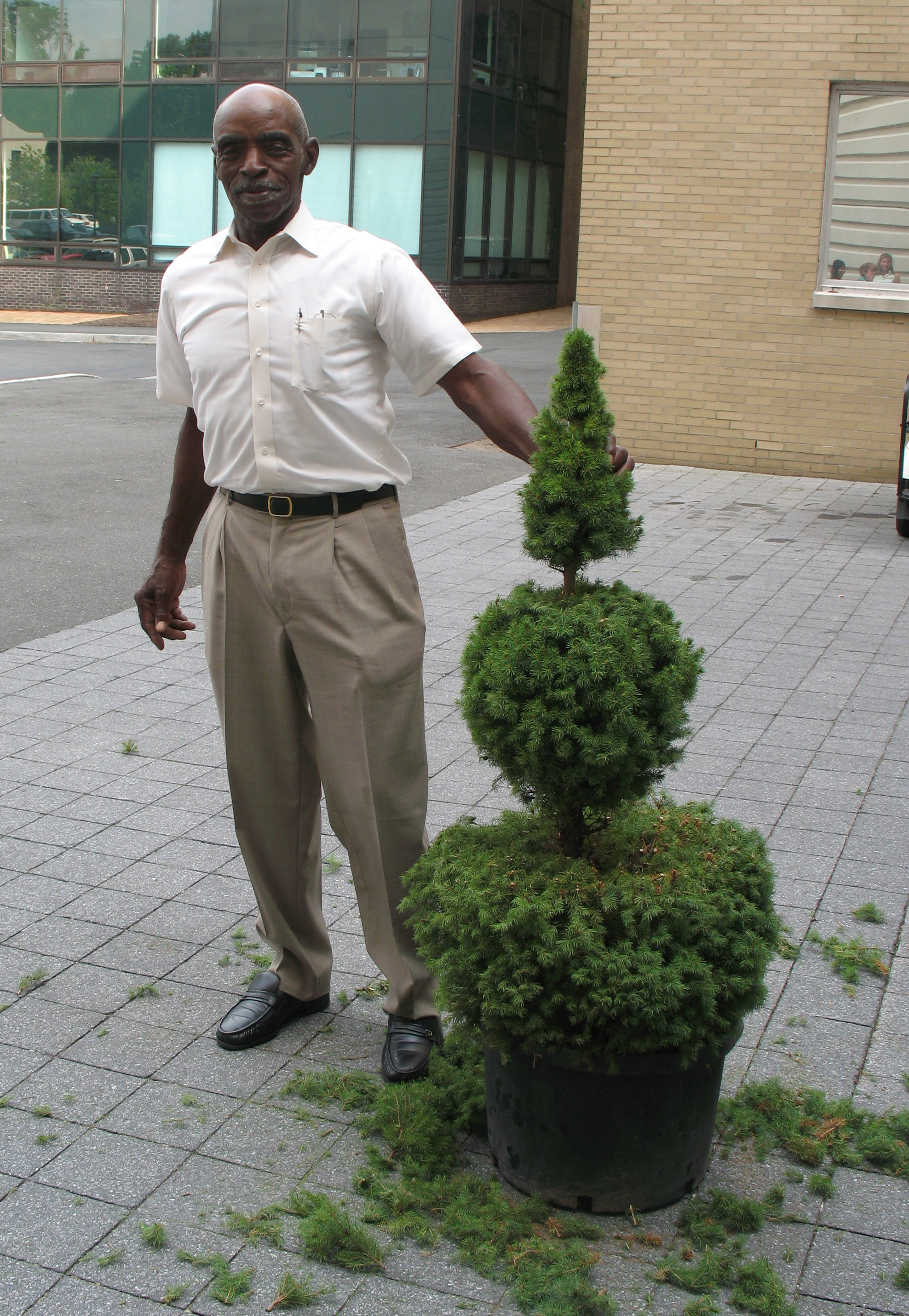 Elsewhere in the Garden, we will be showing films that tell the story of other garden lovers: the self-made topiary artist Pearl Fryer, pictured at right, and poet Anne Spencer. Fryer entered a Lawn of the Year contest and quickly got caught up in the excitement of trimming his hedges, bushes, and trees. He, too, was a “plant doctor” of sorts, often using discarded seedlings from a local nursery to add to his own collection. Fryer visited the Garden this past summer and showed off some of his pruning skills and finesse on an Alberta spruce.
Elsewhere in the Garden, we will be showing films that tell the story of other garden lovers: the self-made topiary artist Pearl Fryer, pictured at right, and poet Anne Spencer. Fryer entered a Lawn of the Year contest and quickly got caught up in the excitement of trimming his hedges, bushes, and trees. He, too, was a “plant doctor” of sorts, often using discarded seedlings from a local nursery to add to his own collection. Fryer visited the Garden this past summer and showed off some of his pruning skills and finesse on an Alberta spruce.
Spencer, who died in 1975, created a sanctuary at her home where she could reflect and write poetry that spoke to many. She hosted many renowned friends, including George Washington Carver, W.E.B. DuBois, Mary McLeod Bethune, Martin Luther King, Jr., and Thurgood Marshall, in her lush and fruitful garden. Imagine the conversations caught in the breeze!
In addition to these events, we will be hosting live musical performances. A full schedule can be found on our online calendar.
We celebrate history to learn from it and to be inspired by its role models. Come spend time at the Botanical Garden this coming week to hear the stories of those who helped shape the history of America.
Check out all of Saturday’s programming
Check out all of Sunday’s programming
Posted in Darwin's Garden, Exhibitions, People, Science on February 12 2009, by Plant Talk
 Carol Capobianco is Editorial Content Manager at The New York Botanical Garden.
Carol Capobianco is Editorial Content Manager at The New York Botanical Garden.
 Charles Darwin (shown in bronze in a sculpture in the Rare Book Room) was born on this day in 1809, sharing the exact same birthday as Abraham Lincoln—though a world away in England.
Charles Darwin (shown in bronze in a sculpture in the Rare Book Room) was born on this day in 1809, sharing the exact same birthday as Abraham Lincoln—though a world away in England.
Last spring the Botanical Garden celebrated his work with plants in the Garden-wide exhibition Darwin’s Garden: An Evolutionary Adventure as a lead-in to this bicentennial year, which also marks the 150th anniversary of his groundbreaking book. (We can’t tell you the name of it here, because it’s one of the questions in the short quiz below).
During the show, some of the world’s leading Darwin experts had gathered to discuss the far-reaching legacy of Charles Darwin and the implications of his thinking for science and society today in a special two-part symposium, Darwin: 21st-Century Perspectives, hosted by the Garden and the American Museum of Natural History, and which you can hear by clicking here.
If you first need a Darwin 101 refresher before listening to these scholars, test yourself with these few questions. The answers are provided after the jump.
Or, if you want to learn about Darwin in song, check out this snippet taped partly in the Enid A. Haupt Conservatory recently of live performer and Darwin scholar Richard Milner. Milner performed his Charles Darwin: Live & In Concert at the Botanical Garden during last year’s exhibition and was featured this week in The New York Times.
And now for the quiz…
1. Darwin sailed to the Galápagos on a ship named…
a. Sundew
b. Retriever
c. Beagle
d. Albatross
2. Darwin began his formal studies in botany at…
a. Oxford
b. Cambridge
c. Glasgow
d. Edinburgh
3. How many children did Darwin have?
a. 10
b. 7
c. 3
d. None
4. Darwin is known as the founder of which famous theory?
a. Relativity
b. Big Bang
c. Quantum Mechanics
d. Evolution by Natural Selection
5. What was the title of Darwin’s book that changed the way scientists view all life?
a. Inherit the Wind
b. The World As I See It
c. Origin of Species
d. The Diversity of Life
Answers after the jump!
Read More
Posted in Gardens and Collections on February 11 2009, by Plant Talk
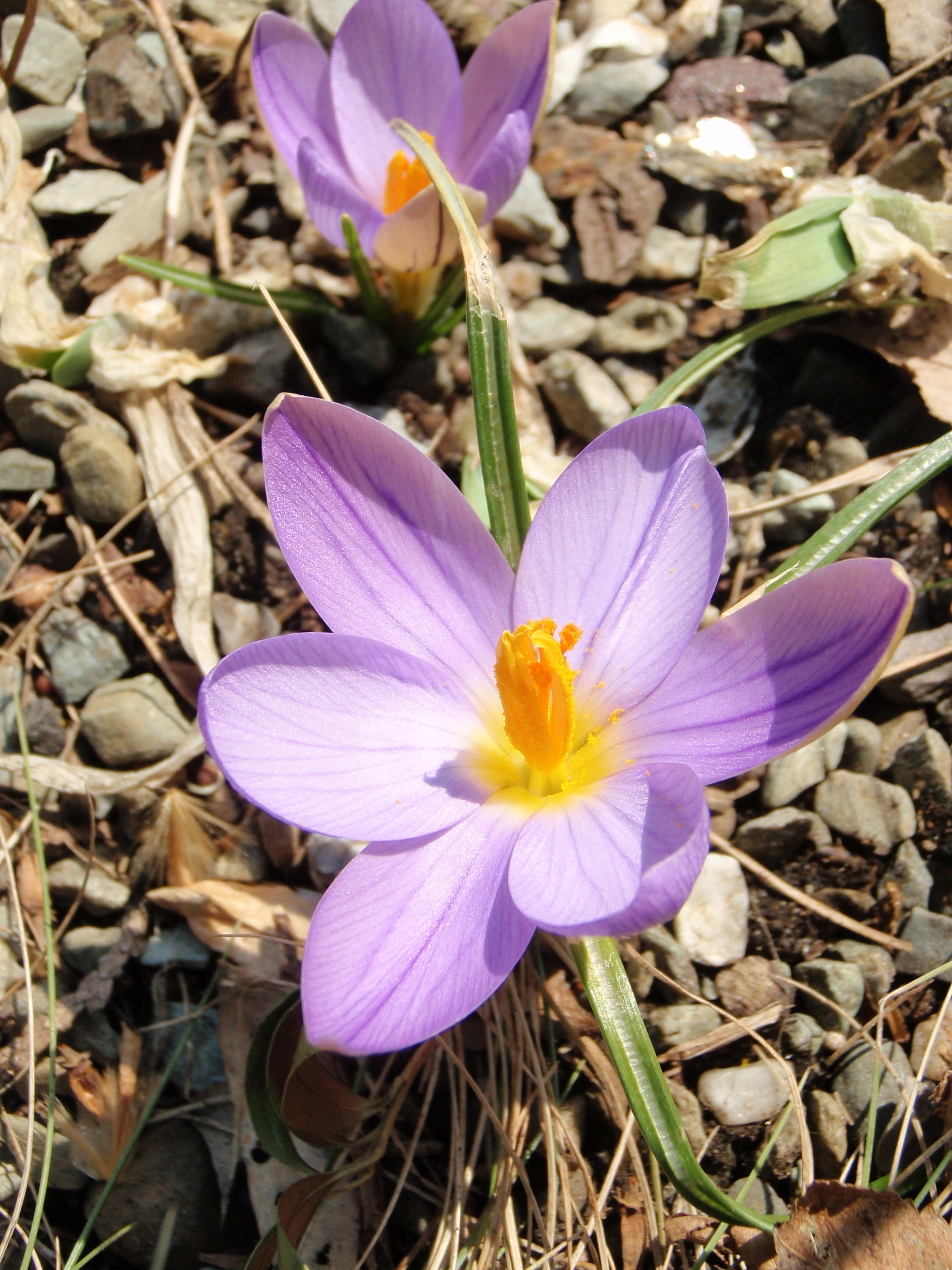
Posted in Gardens and Collections on February 11 2009, by Plant Talk
 |
The Botanical Garden’s living collections is among the greatest in the world and contains more than 1 million plants. Jon Peter, Plant Records Manager, periodically shines the spotlight on a particular species that can be found within our 250 acres.
|
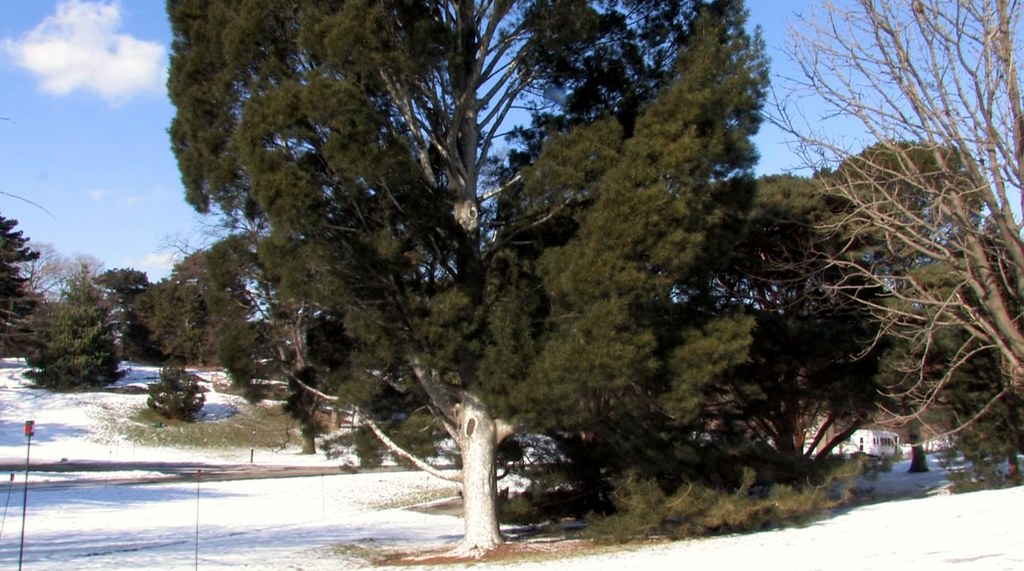
Botanical Name: Pinus bungeana
Common Name(s): Lacebark pine; Bunge’s pine
Family Name: Pinaceae (Pine family)
Native Range: Central to northern China
USDA Hardiness Zones: Zone 4–8
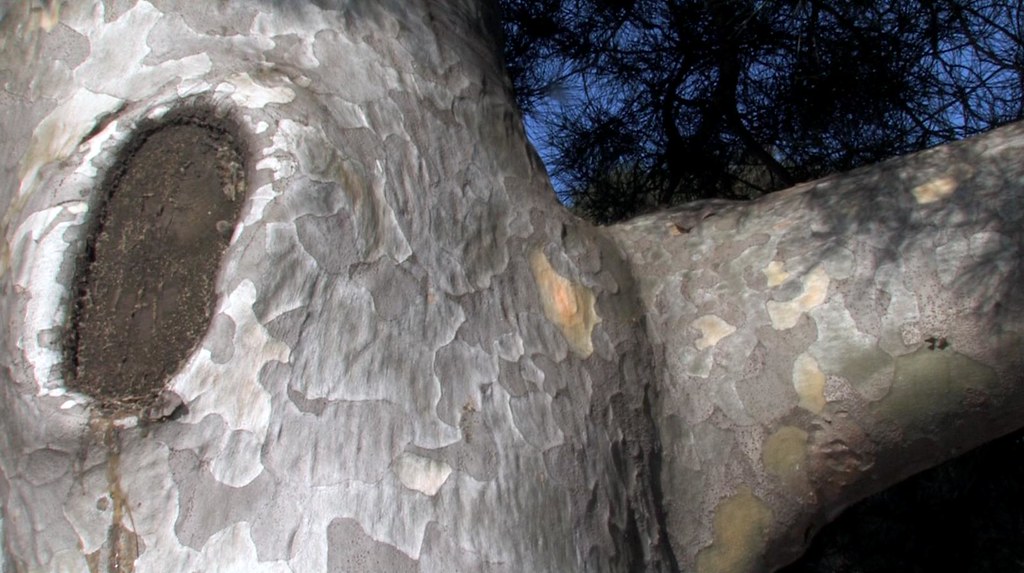 Location(s) within NYBG: By Reflecting Pool, Ross Conifer Arboretum
Location(s) within NYBG: By Reflecting Pool, Ross Conifer Arboretum
Site Requirements: Prefers full sun and is adaptable to many soil types as long as it is well- drained soil.
Interesting Note: A slow-growing pine tree that has many striking features, which help to make this a desirable tree for the home landscape. The best feature is the camouflage bark. which exfoliates with age to create beautiful colors and patterns. This feature is exceptional against a backdrop of freshly fallen snow.
Posted in People on February 10 2009, by Plant Talk
 Sally Armstrong Leone is Editorial Director at The New York Botanical Garden.
Sally Armstrong Leone is Editorial Director at The New York Botanical Garden.
The renowned American philosopher and poet Ralph Waldo Emerson wrote, “…every hour and season yields its tribute of delight” in Nature (1836), his statement of the sublimity of our seasons.
These words have instructed and inspired photographer Lawrence Lederman, a member of the Botanical Garden’s Board of Advisors who has spent the past seven years capturing the beauty and diversity of the Garden throughout the seasons. “By now I know the places to look for change, but there are always delightful surprises.” His poetic images reveal the intricacy of the way light works within a garden or landscape. “Spring is sensual,” he notes, but there is year-round interest that keeps him coming back, such as the brilliance of fall color or the silhouettes after a snowfall.
Lederman, a Brooklyn native, was educated in the New York City public schools. After Stuyvesant High School, he attended Brooklyn College. He studied law at New York University School of Law where he was an editor of the Law Review. To round out his education, he spent one year in San Francisco as the law clerk for the Chief Justice of the California Supreme Court before returning to live and practice law in New York. Currently of counsel in the New York office of Milbank, Tweed, Hadley & McCloy LLP, he is a Distinguished Adjunct Professor at New York Law School. He is also the author of Tombstones: A Lawyer’s Tales from the Takeover Decades (1992), an account of his days as one of the most active corporate and mergers and acquisitions lawyers in the country.
Lederman and his wife, interior designer Kitty Hawks, divide their time between New York City and Westchester County. It was at the latter in about 2001 where he developed his interest in photography and pursued this avocation avidly. Fascinated by the shadows in his own backyard, he experimented endlessly with shape and form. He discovered that in the right light, trees took on the shapes of animals; trying to capture them became a game, which trained him to use his camera. In 2003 the Botanical Garden published his first calendar, Woodland Creatures, which led to his annual series, Trees. In May 2008 Lederman was a Visiting Artist at the American Academy in Rome, where among other subjects, he photographed the Academy’s gardens and the Roman Campagna.
Over the years, Lederman’s cameras and accessories have changed with the times. He is self taught. “I went high tech,” he comments, “because I’m not capable of being low tech, not adept at working with chemicals in a darkroom.”
Photos © Lawrence Lederman, All Rights Reserved
Posted in Gardening Tips on February 9 2009, by Sonia Uyterhoeven
Under or Inter…Planting?
 Sonia Uyterhoeven is Gardener for Public Education at The New York Botanical Garden.
Sonia Uyterhoeven is Gardener for Public Education at The New York Botanical Garden.
What are all these prefixes that we see hanging around the word “planting” and what exactly do they mean?
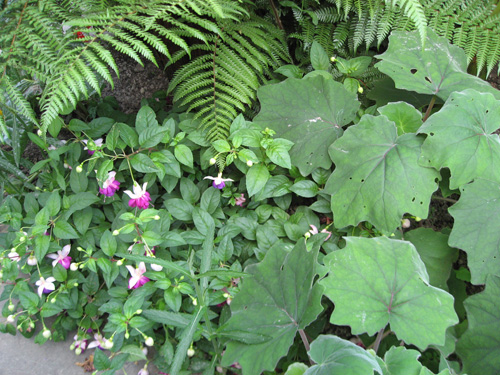 Sometimes a photograph is worth a thousand words. At right is an example of underplanting at Great Dixter in England, the legendary garden of the late Christopher Lloyd.
Sometimes a photograph is worth a thousand words. At right is an example of underplanting at Great Dixter in England, the legendary garden of the late Christopher Lloyd.
Every nook and cranny is filled with plants. Microclimates are naturally created in the garden as taller plants cast shade on shorter plants. At Great Dixter, this is an opportunity for tapestry and texture; fuchsia, begonia, and other shade-loving plants hug the ground beneath taller plants. In the photo, Rolanda petasitis (velvet groundsel) will eventually shoot up to six feet tall, above the fuchsia and fern below.
If you follow the design principles of working with shape, texture, and contrast when combining the foliage and flowers of plants, with a little bit of practice you will start creating beautiful vignettes in your garden.
Interplanting requires a little more knowledge of your plants and their growth habits. Allium (ornamental onion) have beautiful orbicular-shaped flowers, but their foliage is something to be desired. The plant starts off in grand fashion and then starts to yellow before the flower has opened. At Great Dixter, ornamental onions are interplanted with the mounding foliage of hardy geranium such as Geranium ‘Ann Thompson’ and the loose framework of Spiraea x bumalda (bumald spirea).
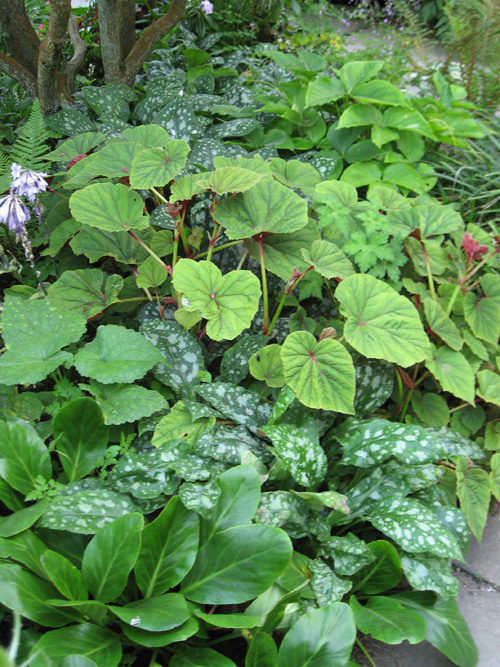 A good example of interplanting is seen at left, where the building block approach of Fergus Garrett, Great Dixter’s head gardener, is apparent. The foundation of this garden scene is the Pulmonaria (lungwort) that you see weaving through the border. Layers of plants are then added to the mix.
A good example of interplanting is seen at left, where the building block approach of Fergus Garrett, Great Dixter’s head gardener, is apparent. The foundation of this garden scene is the Pulmonaria (lungwort) that you see weaving through the border. Layers of plants are then added to the mix.
The hardy begonia (Begonia grandis ssp. evansiana) and jack-in-the-pulpit (Arisaema triphyllum) have a tendency to stretch and rise above their companions, adding a new spatial dimension through graduated heights that give a tiered or layered look. Strong shapes, textures, and color create a dynamism that makes it appear as if the plants are skipping through the border. Understanding how plants occupy space is a key element in this design.
Posted in Learning Experiences, Programs and Events on February 6 2009, by Plant Talk
Much to Do Here, Even at this Time of Year—Surprised?
 Carol Capobianco is Editorial Content Manager at The New York Botanical Garden.
Carol Capobianco is Editorial Content Manager at The New York Botanical Garden.
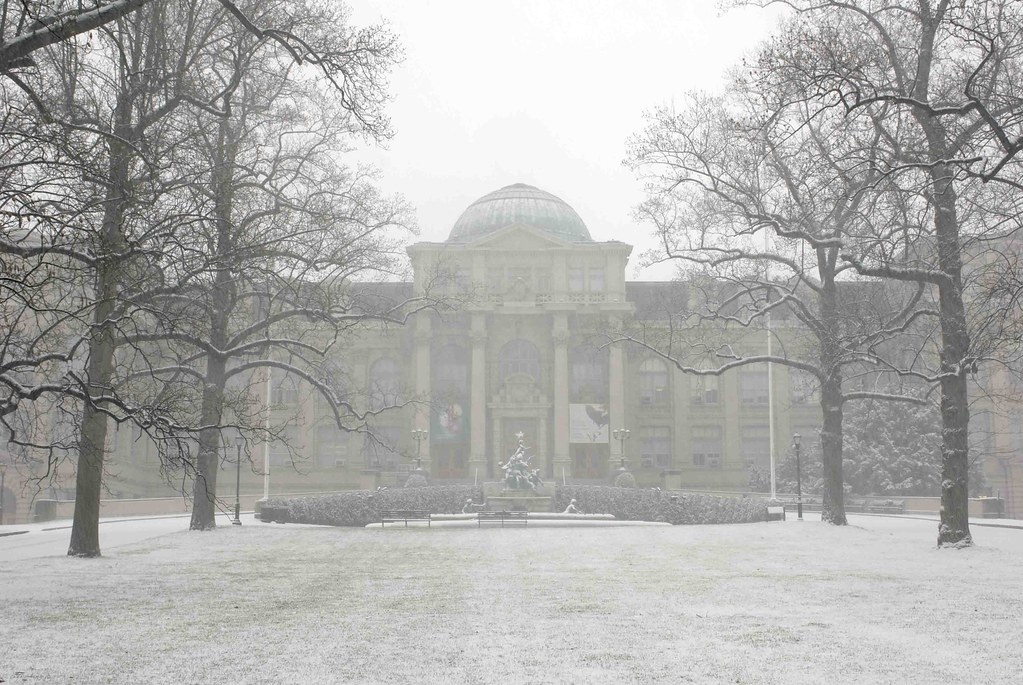 Yes, it’s below freezing outside. Yes, most plants are dormant and bedded under a blanket of snow. Yes, it’s a great time to come to The New York Botanical Garden with fresh eyes to take in the standing and specialty exhibits you haven’t yet seen.
Yes, it’s below freezing outside. Yes, most plants are dormant and bedded under a blanket of snow. Yes, it’s a great time to come to The New York Botanical Garden with fresh eyes to take in the standing and specialty exhibits you haven’t yet seen.
Surprise your friends, kids, or lover by suggesting a day at the Garden in winter. It may seem a little offbeat, but what a treat it can be, because there is so much to do here.
For the bold: Enjoy the cold, crisp air with a guided tour of the Forest or a Saturday morning walk to identify birds with an expert. Or stroll on your own.
For the snuggly set: Don’t like the cold? Warm up inside the glasshouse galleries of the Enid A. Haupt Conservatory for an ecotour around the globe in A World of Plants. Use the self-guided audio tour, or experience the exhibit with a docent tour. Later, stop at one of the Garden’s Cafes for soup, lunch, and hot beverages, and duck into Shop in the Garden to select a needed gift or a good gardening book to cozy up with.
For the procrastinators and the “let’s do it again” folks: Whether you still haven’t seen Moore in America or want to see it again in a different season, these are the final days of the largest outdoor exhibit of sculptor Henry Moore’s works ever presented in a single venue in America.
For the curious: Discover what the Botanical Garden’s scientists are researching and understanding worldwide in the ongoing exhibit Plants and Fungi: Ten Current Research Stories. In fact, Garden scientist Dr. Amy Litt will be giving a talk in the gallery on Saturday, February 7, at 1 p.m.
For the home gardener: Each weekend Sonia Uyterhoeven, Gardener for Public Education, gives informative presentations and demonstrations on home gardening topics.
For the family: Get hands-on with fun activities that explore the fascinating life and accomplishments of the man who helped peanut, soybean, and sweet potato farmers in The Life and Work of George Washington Carver.
For the browser: Spend time perusing the world-renowned collection of botanical books in the LuEsther T. Mertz Library. You will want to visit again and again—the Library holds more than 1 million items spanning 10 centuries.
For the photography enthusiast: View the vibrant color portraits of heirloom tomatoes by Victor Schrager on exhibit—a sampling of the amazing 500 varieties grown every year in the garden of acclaimed food writer Amy Goldman—in The Heirloom Tomato. Bring your camera and take your own fantastic images of the shapes of trees, the Garden’s snow-covered landscape, and the tropical plants in the Conservatory (and share them with us on Flickr).
For the lifelong learner: Cultivate yourself by attending one of the many course offerings of the Continuing Education department. In fact, you can start by signing up for the Special Saturday, all about shade gardening, to be held tomorrow, February 7.
Check out Saturday’s programming.
Check out Sunday’s programming.
 Carol Capobianco is Editorial Content Manager at The New York Botanical Garden.
Carol Capobianco is Editorial Content Manager at The New York Botanical Garden. Peter has been working on a multi-year dream to transform his charge into the world’s largest chemically-free, low-maintenance rose garden. A tall order, for sure, since roses have a reputation of being among the most chemically-dependent flowers in existence.
Peter has been working on a multi-year dream to transform his charge into the world’s largest chemically-free, low-maintenance rose garden. A tall order, for sure, since roses have a reputation of being among the most chemically-dependent flowers in existence.




 Elsewhere in the Garden, we will be showing films that tell the story of other garden lovers: the self-made topiary artist Pearl Fryer, pictured at right, and poet Anne Spencer. Fryer entered a Lawn of the Year contest and quickly got caught up in the excitement of trimming his hedges, bushes, and trees. He, too, was a “plant doctor” of sorts, often using discarded seedlings from a local nursery to add to his own collection. Fryer visited the Garden this past summer and showed off some of his pruning skills and finesse on an Alberta spruce.
Elsewhere in the Garden, we will be showing films that tell the story of other garden lovers: the self-made topiary artist Pearl Fryer, pictured at right, and poet Anne Spencer. Fryer entered a Lawn of the Year contest and quickly got caught up in the excitement of trimming his hedges, bushes, and trees. He, too, was a “plant doctor” of sorts, often using discarded seedlings from a local nursery to add to his own collection. Fryer visited the Garden this past summer and showed off some of his pruning skills and finesse on an Alberta spruce.





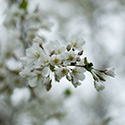
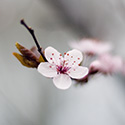
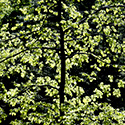
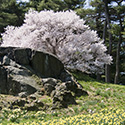
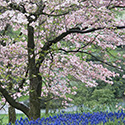
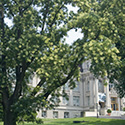
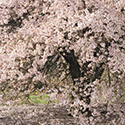
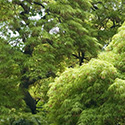
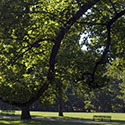
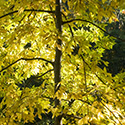
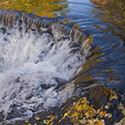
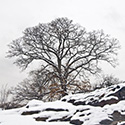
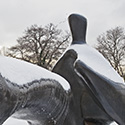
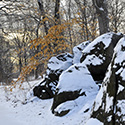
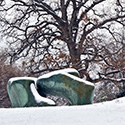
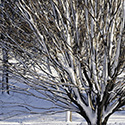
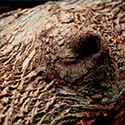
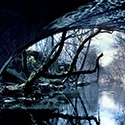
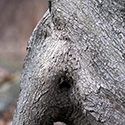
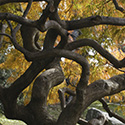
 Sometimes a photograph is worth a thousand words. At right is an example of underplanting at Great Dixter in England,
Sometimes a photograph is worth a thousand words. At right is an example of underplanting at Great Dixter in England,  A good example of interplanting is seen at left, where the building block approach of Fergus Garrett, Great Dixter’s head gardener, is apparent. The foundation of this garden scene is the Pulmonaria (lungwort) that you see weaving through the border. Layers of plants are then added to the mix.
A good example of interplanting is seen at left, where the building block approach of Fergus Garrett, Great Dixter’s head gardener, is apparent. The foundation of this garden scene is the Pulmonaria (lungwort) that you see weaving through the border. Layers of plants are then added to the mix.